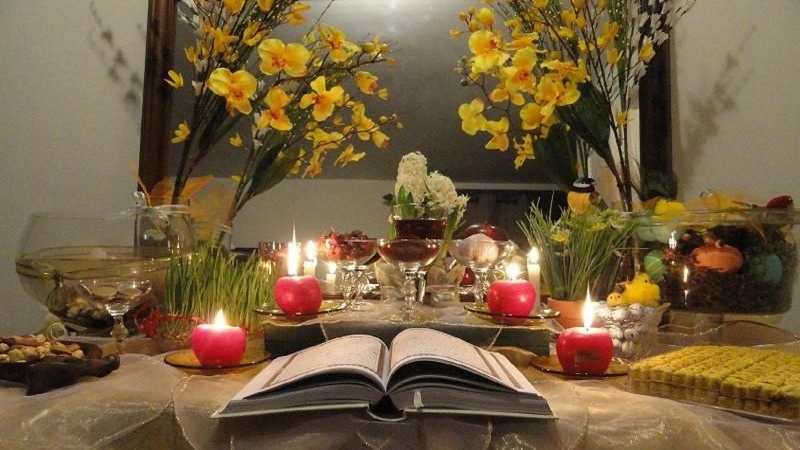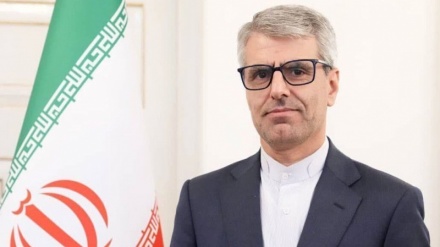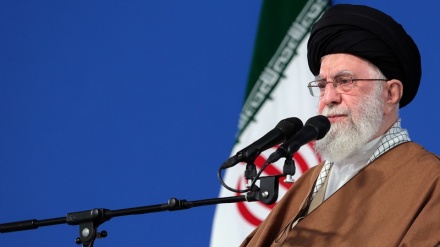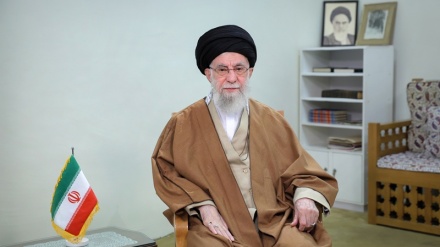Nowrouz (2)
Nowrouz is the Iranian New Year, which is celebrated each year on the first day of spring.
From am etymological point of view, Nowrouz is a compound Farsi word, made up by joining two separate Farsi words; “Now” in Farsi means New, and “Rouz” in Farsi means Day. So literally “Nowrouz” means New Day in Persian or Farsi. Today, the first day of Nowrouz is the first day of Spring and tomorrow, the second day of Nowrouz, is the second day of Spring.
Since nature is the handiwork of the All-Merciful Lord, for this reason Nowrouz is celebrated as a manifestation of the Glory of Allah with prayers and supplications, especially the following invocation:
"Ya Moqallab al-Qoloub wa'l-Absaar;
"Ya Modabber al-Layl wa'n-Nahaar;
"Ya Mohawwel al-Howl wa'l-Ahwaal;
"Hawwil Halana ila Ahsan il-Haal."
Rendered into English the above supplication means:
“O' Transformer of Hearts and Eyes;
“O' Regulator of Day and Night;
“O' Rotator of Time and Situation;
“Change our state to the most excellent of Situation.”
This supplication echoed throughout the length and breadth of the Islamic Republic of Iran and beyond its geographical and political borders at exactly 08:00:00 hours local time, with prayers for the reappearance of the Imam of the Age, Hazrat Mahdi (peace upon him).
Let us delve into the history of Nowrouz, how it originated, the philosophy of Nowrouz, and the Old Persian language, which is no longer in use. From a historic point of view, the word “Nowrouz” had, and still has to some extent, two different meanings. It refers to the spring equinox, and generally marks the start of spring and the start of the Iranian New Year.
But we also have “specific Nowrouz”. Specific Nowrouz refers to the sixth day of spring, the 6th of Farvardin in the Iranian Calendar, (the 6th day of the first month of the Iranian year) which is also referred to as “Khordad Day” (or Rouz –e- Khordad). Iranians in ancient times (about 2000 to 3000 years ago) used the expression “Nava Sareda” to refer to Nowrouz. “Nava Sareda” means New Year.
Iranians living in Central Asia, during the “Sogdian” or “KhawarazmShahian” periods (roughly 1000 to 1500 years ago) referred to Nowrouz as “Nowsaard” or “Nowsaarji”, which again means New Year.
The origin and first appearance of Nowrouz is not certain. Some historians and linguists point to a number of ancient Iranian literary and historical texts, such as the Iranian Islamic scholar, Abu Ja’far Tabari’s monumental History of Prophets and Nations, or the Persian poet Abu’l-Qassem Ferdowsi’s Shahnameh. In both of these texts, although the One and Only God is the creator of the entire universe and Rotator of the yearly seasons, the person who started the Nowrouz celebrations was the mythological Iranian King “Jamshid”. Other ancient texts refer to the Iranian King “Kewmars” as the initiator of the festivity we call Nowrouz. According to Ferdowsi’s Shahnameh, when the Iranian King “Jamshid” was passing through Azarbaijan, he ordered a throne to be placed before him, and he sat on that throne wearing a golden crown. As sun’s rays shined upon the golden crown on Jamshid’s head, the people who had gathered there rejoiced and celebrated, and it was decided to call that day “a new day” or Nowrouz”.
According to historical accounts, the Spring Equinox and its festivities were borrowed by the Persian king, Cyrus the Great from the astronomically advanced Babylonians, who in turn had adopted it from the traditions of Prophet Noah, before deviations set in. Cyrus or Koroush completely Persianized it. The Achaemenids officially started celebrating Nowrouz from 538 BC onwards. Deviations in the celebration of Nowrouz occurred during the Sassanid era, but with the advent of Islam, Iranian Muslim scientists, such as Mohammad bin Musa Khwarezmi, Abu Rayhan Berouni, and Omar Khayyam Naishapuri, succeeded in perfectly computing the solar hijri calendar on the basis of Nowrouz, and dated it from the migration from Mecca to Medina of the Almighty’s Last and Greatest Messenger, Prophet Mohammad (blessings of God upon him and his progeny). Thus the year which starts today is 1395, which the exact number of solar years from the auspicious migration of the Prophet of Islam.
Whatever the origin of Nowrouz there is no doubt that it is one of the oldest Iranian festivities and celebrations. Just like Ferdowsi’s poetical masterpiece, “Shahnameh”, Nowrouz is linked to Iran’s National Identity, it is a national treasure. It can even be viewed as the “birth certificate of the Iranian nation”. Nowrouz is a significant part of Iran’s national identity, and because of its connections with Islamic hadith, it is still flourishing in Iran, when all pre-Islamic festivities have been erased from memory. A famous statement on the significance of this day from the Prophet’s 7th Infallible Heir, Imam Musa Kazem (AS), reads:
“In Nowrouz Allah made a covenant with His servants to worship Him and not to allow any partner for Him. To welcome, His messengers and obey their rulings. This day is the first day that the fertile wind blew and the flowers on the earth appeared. The Archangel Gabriel appeared to the Prophet, and it is the day that Abraham (as) broke the idols. The day Prophet Muhammad (SAWA) held (Imam) Ali (AS) on his shoulders to destroy the idols the Quraish had placed atop the (symbolic) House of God, the Ka’ba.”
Let us now turn to the philosophy of Nowrouz. Why do Iranians celebrate Nowrouz?
As we said earlier, the celebration of Nowrouz starts exactly at the spring (or vernal) equinox. Astronomers and mathematicians tell us that an equinox is an astronomical event in which the plane of Earth's equator passes through the center of the Sun, which occurs twice each year, around 21 March and 23 September. On an equinox, day and night are of approximately equal duration all over the planet. The celebration of Nowrouz tells us that ancient Iranians had considerable knowledge of astronomy and mathematics. Dr. Fereidoun Joneidi, an Iranian researcher says: “The Nowrouz festivity is a great celebration, but it is closely linked to mathematics and astronomy of ancient Iran. Thousands of years ago, Iranian astronomers and mathematicians had worked out that the spring season starts roughly on 21st March”.
This was particularly important for farmers, of course, who keenly awaited the arrival of spring and warmer weather to restart their agricultural and farming activities. Since in ancient times, much of the population of Iran was engaged in farming, it is easy to see why Nowrouz became a popular festivity throughout Iran. Nowrouz hailed the arrival of spring, and this was, of course, good news for farmers. Thus ancient Iranians celebrated the revival and regeneration of nature and the start of the work season for farmers and agriculturalists.
Dr. Saeed Mo’eedfar, an Iranian sociologist believes that the message of Nowrouz throughout Iran is a message of change , a message of transformation which comes with the new spring season. Dr. Mo’eedfar says this could be the reason why some academics have claimed that Iranian people favour change and transformation more than other nations of the world.



